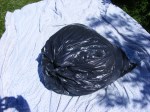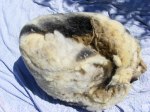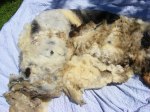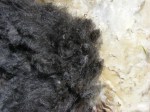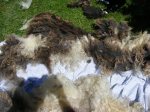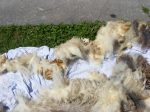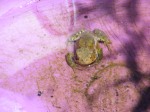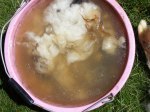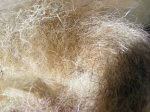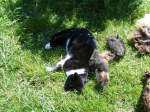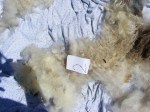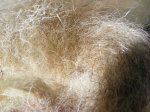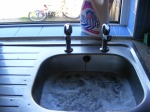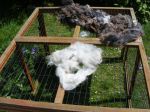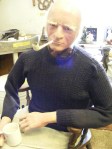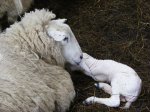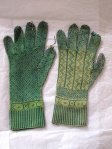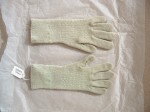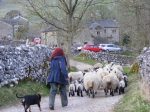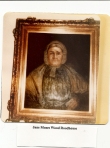Just to make it easier for people to find me… I’ve moved! I’ll be blogging here from now on:
“The Yorkshire Mary Rose”

The Grand Turk, Whitby
Few scholars, costume historians or keen students of knitting history seriously believe for a minute that ganseys (or any knitted jumpers for seamen) existed prior to the 19thC. But the myth does get promulgated, occasionally on places like ‘Ravelry’, and neophytes may get taken in. And I like to think of myself as a kind of iconoclast. Sacred cows are for exploding. Let’s do some more…
Apparently, the “reason” we have no earlier evidence of mariner ganseys is due to the slop chests – even of abandoned ships – being plundered. Clothes were valuable, etc etc. Plus, of course, the conditions on a sunken vessel are not conducive to textile preservation, archaeologically speaking. Sounds logical, right?
Until you’ve heard of The General Carleton.
A couple of months ago, we visited the Captain Cook Memorial Museum in Whitby. By some total fluke – ’twas an impulse visit – there, on the top floor, was a temporary exhibition. And in that exhibition were… some knitted artefacts from a vessel, The General Carleton of Whitby, which sank in the port at Gdansk, Poland, in 1785. They are on temporary display at the Captain Cook Memorial Museum – and well worth a visit before they return to Gdansk!
The General Carleton artefacts can normally be found at the Polish Maritime Museum, in Gdansk.
We couldn’t photo the artefacts for yous with no permissions in place – but look out for a future ‘Knitting Genealogist’ article in ‘Yarn Forward’, where we hope to share some with you, if we can get the permissions we need!
The story of The General Carleton and the rescue archaeology that brought the Yorkshire ship’s artefacts to the Polish Maritime Museum is best told on his website, or in his book “The Yorkshire Mary Rose”, by Yorkshire born and bred writer, Stephen Baines.
Mr Baines’ ancestors were Whitby mariners in the 18thC and 19thC – who better to tell the story!
Suffice to say here, the ship’s contents (around 775 artefacts) were saved by a weird and wonderful chance. The day it sank, The General Carleton had a cargo of pine tar, which mixed with the Baltic seawater and sand, formed a matrix which acted as a protective barrier, preserving even the contents of maybe 9 or 10 slop chests.
Aboard the vessel were the Captain, William Hustler; John Pearson, carpenter; John Swan, second mate; 6 new seamen – Nicholas Theaker; George Taylor; John Purvis; Andrew Gibson; Andrew Noble and Thomas Edes; and the apprentices, James Hart, John Thompson, John Noble, John Fraiser, Richard Neale, John Johnson and Richard Trueman. Only Hustler and Theaker perished during the storm – local tradition has it that the other mariners made it to shore.
Several of the knitted artefacts (excavated in 1995 and previously only on display in Gdansk), are on loan to the Captain Cook Memorial Museum. These include stockings, mittens, gloves and, most glorious of all, a colourwork thrummed cap.
Amongst the retrieved body of artefacts are gloves, mittens, stockings, waistcoats, sailors’ serge jackets, shoes, – basically almost the entire and intact contents of the crew’s slop chests. Some of the items look to be traded – most obviously, some very Latvian style mittens. Others – notably the stockings, and the beautiful Shetland patterned hat with a thrummed border, look to be Yorkshire knit. The hat is a natural white, with orangey and browny/green forming the patterns. I suspect it is locally knit because I have found an image of ‘whalebone scrapers’ in the 1814 ‘Costume of Yorkshire’ (George Walker), which are almost identical – white knitted caps, patterned with bright orange and green. The repro pattern has a tension of 20 st to 10cm. I will try and get up there to study and document it accurately before it leaves Yorkshire, but Appendix 4 of Stephen’s lovely book, ‘The Yorkshire Mary Rose’ has a pattern already worked out for a repro of the hat and I am sure it is accurate!
There is a photo in Stephen Baines’ book of some of the clothing, as it was excavated, still neatly folded with a felt hat on top – exactly as it was left in the slop chest (which must have rotted away from around it).
Mr. Baines writes:
“A sailor’s most valuable possessions were his clothes, which might include a jacket or two, a waistcoat or two, three shirts, a pair of trousers and a pair of breeches, two pairs of drawers, two or three pairs of stockings, two pairs of shoes, a couple of handkerchiefs, a pair of mittens, a hat and a cap…. The surviving clothes were all from the stern section of the ship, and so are likely to have comprised the contents of the sea-chests of the master, mate, and the servants – possibly the carpenter – in all nine or ten people…”
From “The Yorkshire Mary Rose”, Stephen Baines, Blackthorn Press, 2010
This book is a cracking read, and has good images of some of the knitted artefacts.
The sailors were of course, wearing clothes when the ship went down (all hands survived) and so, given the fairly liberal amounts of clothing found on the wreck, from this we can imagine they were pretty well provided with clothing. Do I need to add – there is not a shred or trace of a gansey or anything that could be a fragment of one? And I doubt pine tar discriminates. There is a serge jacket in a remarkable state of preservation – as are the knitted items currently on display at Whitby.
So there we have it. A perfect time capsule of a Yorkshire vessel with a named crew (the original muster rolls for every voyage survive) out of a Yorkshire port in the 1780s – no ganseys. Only woven waistcoats, and woven jackets. 15 jackets/jacket parts survive and 27 stockings/stocking parts. [Pg 67]. Mr Baines remarks that less than half of the extant stockings were machine knitted. Looking at Whitby businesses of the time, and extant clothiers’ records, he concludes the mariners’ clothing was probably a complex mix of shop bought, commercially made clothing and home-made.
Experienced sailors would buy their clothing from specialist slop-shops that could be found near docks in most ports. Young mentions that in 1816 Whitby had six slop-shops and there would certainly be some in 1777, with the proprietors of such establishments appearing in the parish records as shop keepers…
http://www.amazon.co.uk/Yorkshire-Mary-Rose-General-Carleton/dp/1906259208
I stumbled on this exhibition the very week I’d been at York Reference Library, researching the York charity schools – hotbed of stocking knitting in 1780s’ Yorkshire. So very odd to have held Catharine Cappe’s 1799 book in my actual hands and then, within days, see some actual 1780s’ Yorkshire stockings! The hat is what really grabbed me, though. Look out for a future ‘Knitting Genealogist’ feature in ‘Yarn Forward’ – I’ll try and share it with yous!
Posted in ganseys, Genealogy, guernseys, History, Knitting, yarn forward | Leave a Comment »
I’m ridiculously excited as the first in my ‘Knitting Genealogist’ series is out in the current issue of ‘Yarn Forward’ magazine. (Yarn Forward 29).
In it, we featured this undated photo by Lewis Harding which, using my basic sleuthing powers, I was able to date to the early 1870s.
I won’t say much about it here – but just to whet your appetite, I will say something that never made it into the article.
The photo is of Mary Jane Langmaid and Ann Elizabeth Jolliff.It was taken at Harding’s studio at his home, Osprey Cottage, in Polperro. Both were Polperro girls.
Lewis Harding was one of those middle class, slightly jobless types who had grown up in London, Cornwall and France. In middle age, his doctor thought taking up photography might be therapeutic. This photo was taken with the collodion process, so fairly cutting edge for the date. But we have earlier photos of locals – fishermen, on the whole, including the famous panel of 84 portraits, thought to be taken in the 1850s/60s. These are the first, clear images of ganseys ever taken.
Now, in theory….these girls could be two random locals, posed with someone else’s knitting. The collodion process required them to sit still for 30 seconds or slightly longer, meaning what we’re looking at here is Girls Holding Their Knitting, as opposed to Girls Knitting. The girls are not using knitting sheaths, as you’d expect professional hand knitters to do so, at this date. Or not obviously.
However, I managed to use Censuses to establish that Mary Jane and Ann were in fact contract knitters from an early age and both went on to knit for a living.
No doubt this is one of the earliest, quality close-up portraits of knitters at work. Knitting was an everyday sight in various ports and along various inland waterways. Yet we have very little record of it happening. What I didn’t get room to mention was – if you look very closely, at a blown up version of the image…. you can just see Ann’s knitting sheath poking out below her left arm. This makes it a Very Important Picture. The first known photographic image of a knitter with a knitting sheath…
If you’re remotely interested, buy the magazine and read more about Mary Jane and Ann. It’s so rare we can have such a good quality image, from so early on AND be able to put a name to the subjects.
Lewis Harding took numerous photos of the Jolliffs and other Polperro families, and it does put paid to that other hardy perennial of gansey myths – that villages, sometimes even families, had their own distinctive gansey patterns. Often no two Jolliffs were a remotely similar gansey and yet censuses show us these men are siblings/parent and child, etc. It is amazing to look at the men’s portraits and realise you know the name of the knitters of the ganseys they are wearing…
I have a more lengthy article in a forthcoming ‘Family Tree Magazine’ about tracing your knitting ancestors. It’s amazing just how many hand knitters there were in 19thC England.
I have been silent but not entirely lazy. Not just writing but doing book research. One of the areas I’ve been looking at are the York charity schools. I was really lucky enough to be able to hold a 1799 book by Catharine Cappe, founder of the York Knitting and Spinning Schools, in my hand and take notes directly from it. Catharine described precisely how the schools were run, when she set them up in the early 1780s.
Again, not a spoiler but a morsel…. Catharine was so successful with her charity school ventures that the already existing York Grey Coat Girls’ School asked her to intervene to rescue their failing venture.
In 1780, Catharine had visited York, only to hear that whilst the boys’ school (Blue Coat) was fine, the girls’ School turned out girls who were “sickly, remarkably low of stature, and unfavourable….” [18] The school’s doctor remarked to Catharine that there were, to his knowledge, “…nine miserable girls… upon the town,, the wretched victims of prostitution…” [18] Catharine decided to investigate.
In 1785, the School was rebuilt and Catharine asked to visit. She found the girls “…generally diseased in both body and mind; their appearance sickly and dejected; their ignorance extreme; and the description given to me by the new Master and Mistress of their moral depravity, truly deplorable.” [20]
Girls had to knit a stocking in a week by the age of around 7, to be even accepted into the main school. This gives us a sense of their speed and ability.
She managed to turn the place round and make the girls into knitters and spinners as opposed to Ladies of Negotiable Affections.
As hand spinning died out, the same class of women were encouraged to take up knitting. There were some things frame-knitting (machine knitting) couldn’t do – or couldn’t do well.
By the late 19thC, a girl who was a competent fancy knitter could earn more staying at home and knitting, than if she went out to be a servant – so it was an attractive option.
You can find this picture in ‘Cornish Guernseys and Knit-frocks’, Mary Wright, Polperro Press. Or Lewis Harding – Cornwall’s Pioneer Photographer, Philip Correll – both published by Polperro Heritage Press
Posted in Uncategorized | 3 Comments »

Lillie and Leslie, 1926, Bridlington
I learned one thing this week. Never take your old family photos for granted!
I’ve always had this photo in a box, somewhere. It is my grandma, Lillie and my dad and we always called it ‘The Grumpy dad Photo’.
I’d assumed it was taken by my grandad, Billie, and thought nothing more about it – just a typical seaside shot. Dad was born in February 1926, so this image was almost definitely taken in 1926.
Go back 18 months or so from this, for a minute, though.
My grandad, Billie, came home from World War One a few years before, and was one of the only men of his generation for streets around. He could have his pick of the women. And dad used to tell me, Grandad said he chose the girl known then as the most beautiful woman in Leeds.
This is my grandparents when they got engaged:

Lillie and Billie Get Engaged, 1925
Imagine my surprise when my dad’s cousin, who emigrated to Canada in the 1960s and returned here to Yorkshire this year, to clear out his late mum’s house found her copy of this in a drawer and sent it to me, with a link to this website:
So the photo comes from a photographer, William Foster Brigham, considered to be one of the top six photographers … in the world, as Clarkson would say.
And there was I, assuming it was just a snapshot taken by my grandad.
Of course, chances are it was by one of Foster Brigham’s employees not the man himself. But still. From now on I’m determined to think of it as a photo by one of the top six photographers… in the world.
Posted in Genealogy, History | 2 Comments »
“To another room came they,
Where children were in poor array,
And everyone sate picking wool,
The finest from the coarse to cull…’
[Visit to Winchcombe’s 16thC factory, quoted in ‘The Spinner’s Workshop’ by John Mercer].
My dad was a Leeds man. Leeds men of his generation – even those not connected to the wool industry – knew a bit about wool. He’d just feel a suit for a few seconds, and announce with disgust:
“Shoddy!”
Meaning it was made from a mixture of virgin wool and waste recycled woollen rags. His father owned a dairy – nothing to do with wool!
Leeds people (‘Loiners’) could do that, spot shoddy on sight. Touch a coat and know instantly if it was wool or something masquerading as.
Here’s grandma, dad and grandad in a Bridlington walking shot on one of their rare days off from the business:

Dad eating chips, Bridlington, 1930s
Over the 27 years or so I’ve been spinning and dyeing, I didn’t realise it til recently, but I’ve probably developed a similar instinctive knowledge when it comes to my sense of touch and wool. It comes with time and practice. Also you have to reach the point where you’re confident in your own abilities!
Here’s how I sort a fleece.
I learned this from books years ago, in the days before YouTube, etc and when books that covered wool sorting for handspinners, couldn’t afford to have many, or colour, illustrations. I sued to sort a fleece with one book or another open at the woolsorting chapter, propped open nearby.
I forget when I was suddenly just wool-sorting, without reference to anything but touch and sight.

My grandma, Lillie Boothman, with lamb
Above: My grandma, Lillie, with a lamb she met at a relative’s farm. She adored this sheep so much she kept a lock of its wool. This would be 1926. I still have it upstairs!
This little series of pictures, this is what I wish I’d had when I started. Ignore my ramblings and words and just look at the pics if that helps – I’m no expert, I have done this for many years but as I say, only learned from books and over time, it became instinctive. Now I see people ask qs on Ravelry and other places and realise this might be useful for some…
Yesterday was a suitably hot and sunny day – ideal for wool sorting/washing as you can do the whole process outside.
And here is the Jacobs fleece I got at the weekend. Jacobs are wildly unpredictable fleeces and honestly, rarely brilliant. Unless you get it from prizewinners like those we photographed months back, when I blogged about Masham Fair. As a result I wouldn’t usually choose Jacobs anymore unless I wanted the colour variation. But I got given this so…
Owt for nowt as my dad and grandad would have said.
First, despite the grass being dry, I spread an old duvet cover on the lawn. It’s bad enough teasng the farmer’s vegetal matter out of some fleeces – so I’m not about to add my lawn clippings!
Yes you’re not meant to keep fleece in polythene. But yes, I do. Bad girl. It’s OK if you poke a few holes in it and don’t leave it in there too long. Once it’s washed it can go into old pillowcases, though.
[Click the Thumbnails if you want really close up gory detail!]
The hardest part of sorting can be unrolling the fleece. Whenever I have messed this stage up – or the shearer rolled it badly – it has always ended in tears. If you can try and unroll your fleece to keep it as intact as possible, the shape of it will help you, and give you clues as to what’s where in terms of wool grades.
You want the cut side (the side facing you before you start to unroll), against the ground and the tips facing you. Eyeball these pics as I unroll and you’ll see what I mean…
Sometimes (usually in fact), they tie the whole woolly bundle round with the neck wool to secure it. In this case, it was secured without a long ‘tie’ of neck wool, but if it is rolled this way be very careful undoing the ‘tie’ as some of that can be your best wool of all!
Here’s the roll partially undone. Notice you can differentiate from the sheared (underside) wool and the tips. This is another clue to help orientate you, whilst unrolling the fleece.
The fleece should be rolled up so the belly wool is either side, and wool from the sheep’s back will be in the middle of the whole fleece, once its rolled out. It will be obvious fairly soon which end is neck and which is rump. The neck wool is usually a long piece. Follow the smell for the rear end!
Sheep are filthy things so you will probably find poo the entire length of the belly, both sides.

Unrolled Fleece
Because this is a bi-colour fleece, I now have a decision to make. I can sort for colour, or can sort for quality. Or… I can sort for both!
Looking at it, this sheep’s markings meant most of its grey wool was close to the neck (best quality wool), but looking at it closely, it was of different qualities, but there is no really poor wool up at the neck end, where it’s grey.
I have no project in mind yet – if I had, then the decision would be made for me. Want to make a shaded jumper like this from Jacobs? You have to sort for colour depth first, staple (wool’s) quality second.
With this particular sheep, there was a strong defined line between most of the grey and most of the white:
So I decided to separate the largest ‘blob’ of grey from the rest, then just sort the rest for its quality.
I can blend all the varying qualities grey seeing as none are spectacularly fine staple, and none terribly coarse. When you separate off the wool, notice staples (clumps of wool) grow in lines or rows almost. Use this to your advantage and separate gently between the ‘rows’, when you can.
If you have a self coloured fleece though you will never have to think about this! All you’re doing then, is sorting into 4 or so broad qualities. For a first attempt I’d try a sort of medium-ish length stapled wool (Say, Cheviot – which also has the advantage of being all one colour).
Now, woolsorters of old had enchanting names for different qualities of wool to be found within a single fleece. ‘Britch’ and ‘”skirtings” and “back” for example. But over the years I have just dropped all that (much as I love the idea of it!) and gone with 1, 2, 3, and 4. 4 is the stuff I’m going to ‘skirt’ off and not even bother with. 1 is the prime, finest, best quality stuff.
Usually you find the majority of a fleece will be 2. Up around the shoulders and neck, you might get 1. But look carefully as it may be elsewhere, especially on the flanks.
Sorting wool for quality seems daunting but a lot of it is common sense. Where bits of the sheep rub together – well that’s like putting your Malabrigo Laceweight in a tumble dryer. It’ll felt! Be coarse. Plus sheep are nothing if they’re not
(a) hell bent on mindless self destruction and
(b) poo factories.
It’s the (b) we’re worried about here.
All round the edges, on both sides you are likely to find poo. You want to skirt that off. Gently use your hands to pull apart the fibres, taking away all the contaminated fleece like so:
Sometimes if the sheep isn’t so filthy, you may have to lose a lot less to the skirting.
Years ago I was so frugal with fleece, I’d wash and keep the skirtings too – but they take SOOOOO much washing that these days I tend to do soak in a bucket of water for a day or so, then tip the liquid ‘fertiliser’ over my roses…
I use the rubbishy wool as mulch on the garden.
I had to go down the bottom garden and look for my old bucket, first. And on my travels, found this gent sat in the kids’ old sandpit:
If you’re more frugal than me you can wash and re-wash til you get the poo out, then sort it into your main categories.
I am now going to sort the remaining fleece into 3 categories.
1 = prime wool
2 = OK wool
3 = poorest quality
As a rough guideline, coarse wool has a different ‘handle’. It may be kempy (hairy), feel coarse – the individual wool staples will be ‘fatter’ and feel a bit more like the sort of ‘limp, lifeless’ hair Cheryl Cole tells us not to have in the L’Oreal ads:
This is what 3 Wool looks like – coarse, and not so crimpy (wavy) . It’s worth taking a closer look at wool from all 3 types – pull out a lock, snap between your fingers. If there’s a break, the wool may appear sound but be weak and snap when you pull. Due to the sheep’s illnesses, or being out of condition at any point prior to shearing. Also look at the tips. (Opposite end to shorn end). If they look brittle and fragile – you may be wise to cut them off – if you can sacrifice that length of staple. But it could also be a sign of an out of condition sheep or wool that will never be fantastic whatever you do (silk purse, sow’s ear etc etc).
Hogget (first clip from year old sheep) fleeces are a bit more reliable quality wise as for the first shearing the sheep will produce the best fleece it is ever likely to, and less prone to be coarse or have breaks. Kempy wool isn’t great either as it’s scratchy and the little hairs may work free after spinning. Not only potentially itchy but they may abrade the finer fibres and after a few washes your pretty skein of handspun will look unbalanced and…weird.
Looking at this fleece, only Category 1 wool was unkempy. It truly isn’t a great fleece. But it will do.
Meanwhile, Helen the 3 legged cat (Or ‘Tripod Of Evil’ as we call her), loving the stench of poo-ey wool in extreme heat, started making a bed (Predictably using some of the better fleece):
I find it easiest to spot the ‘worst’ wool first and sort it as sometimes 2 and 1 are harder to differentiate frome achother but often the 3 Quality is very obvious – so get that off, then you can concentrate! 3 may be useable if blended with Category 2 wool. Or you could use it alone for a specific purpose. In the Dales, they’d sort wool into ‘leggings’ and ‘footings’ – using the coarser stuff for the feet. Again, a lot of your decisions later on will depend on final use.
Eyeball the fleece closely and start to gently pull apart at the points where you think the 3 Quality wool adjoins the better stuff. Again, notice the natural lines the staples have and work with it, where you can.
Again, common sense helps – if you think about it, the ridge of the sheep’s back is the most exposed to the elements. This will often be amongst the coarsest wool. Its flanks might not be so bad.
In fact the crimp in wool is another clue as to quality. Where it looks flatter and not so wavy- it may feel (and be) coarser – most obviously on the left of this image here:
Of course, don’t forget this is a decidely below average Jacob’s fleece – and different breeds have different amounts of crimp. For info on more types of wool than you can shake a stick at, check out Nola and Jane Fournier’s In Sheep’s Clothing. It’s a great reference book and I use it constantly when buying or aving just impulse bought, raw wool…
Now, 2 is your average wool – neither great nor terrible. In this case, it looked like this, see ? More crimp than the 3, finer, and a slightly shorter staple:
And finally, the 1 wool – some of which was mixed in with the grey I had already separated off. As usual, all the best wool on the animal came from around its neck and shoulders. This wool was finer, and more crimpy.
As a picture is more use to you than words here, compare this close up of the 1 wool to the kempy 3 wool close-up :
Finally, I separated my 3 piles of wool into 3 bags, each with a label.
This fleece is unusual in that it had the tiniest amount of Quality 1 wool I have ever seen – ever on any fleece. Ever. Jacob’s is rarely fantastic anyway. Unless you go to the Masham Fair or a similar show and buy it from a prizewinning wool sheep that looks like this, of course!
I don’t even know what to do with it yet but – given the sunny day, was ideal fleece drying weather so I scoured the grey and the 1 Quality straight away.
‘Scouring’ is the traditional term for a thorough wash. Basically hot water + detergent dissolves the grease, sheepy sweat (“suint”) and dirt. ‘Washing’ meant just quickly dipping the sheep before shearing or the fleece after, in running water.
I’ll talk about scouring some other time.
But here was the wool drying on the mesh of my bunnies’ run:
I try to do all my fleece washing and drying in the summer/early autumn if I can as it’s quicker to dry but also if you leave fleece in the sun for a few hours, it kills some ‘baddies’ like leptospirosis. Not a risk with this fleece as it was only sheared the other day and came straight to me in that bin bag – but you can’t account for the good or bad storage habits of others.
Wool was tradtionally dried and bleached in full sun. In 19thC Haworth, they dried clothes over the gravestones – quite a common sight in rural areas, too. Vicars would moan about it. At earlier dates, the wool factors would also hang woven cloth for sale over church walls – often simply the biggest available ‘viewing space’. This led to the building of Piece Halls like the one in Halifax, where pieces of cloth could be displayed to best advantage, for buyers to select.
Posted in Genealogy, Knitting, Textile Arts | 3 Comments »
Wondering about the discussion elsewhere re. fancy sheaths, I had a quick trawl of the 19thC Newspapers archive from the British Library.
And I found this, for Darlington (Teeside, bit further North of Yorkshire) about an agricultural show and its prize categories, several times in the 1870s:
Middleton-in-Teesdale Floral, Horticultural, and Industrial Society held its fifteenth annual exhibition on Saturday afternoon….
One category is
Ornamental Knitting Stick
The winner was Thos. Anderson of Harwood.
That ‘ornamental’ suggests some indeed were just made for show.
Meanwhile, The Sheffield and Rotherham Independent, Nov 1871, describes a Hospital Bazaar at Rotherham (South Yorkshire) where offered for prizes are “German silver knitting sheaths”.
Only ten years later, in 1881, London’s Morning Post describes a meeting of the British Archaeological Society, where members were producing Byzantine coins, bits of Neolithic flint, etc:
… Mr Ferguson, F.S.A., produced a large collection of knitting sheaths from the Wigton district, Cumberland. These archaic-looking instruments were much commented on, and the chairman pointed out the resemblance of sum of the form of knife on the mithraic scultpure at Newcastle; while Mr. G. Wright., F.S.A., drew attention to their analogy to the Persian creases….
These sheaths sound workaday and probably wooden. Clearly what the academics thought as crazy curiosities were still in use though, as finally, an ad from 4.1.1888’s London ‘Morning Post’:
LOST , on Saturday, between Seymour-place, Bryanstone-square and Sloane-street, an Old silver KNITTING SHEATH. Whoever returns it to Humphries, 52 Seymour Place will be REWARDED
What’s interesting about this is it’s 7 years AFTER the archaeologists have already decided sheaths are ‘archaic’ and also – the fact it’s silver and owned by someone wealthy enough to live near Sloane St – means it’s probably been used as an everyday thing, despite the fact it’s silver (bearing in mind people at this date still willed silver teaspoons to eachother, and/or got hard labour for stealing comparatively small bits of silver!)
Ah just gone to check on FindMyPast as you can search the census by street names alone. This Seymour Place is in Marylebone. In 1881 no 52 is occupied by Robert and Mary Ann Humphris sic, ages 40 and 38, born in Plymouth, Devon and London respectively. And Robert is….. “Silversmith employing 3 Men and 2 Boys”. They live with a brother in law, nephew and one servant. Assuming you wouldn’t let a servant loose on the streets with a silver knitting sheath, we can probably guess the lady of the house lost it! And Robert Humphries must have made a few silver sheaths (If there were not plate silver they’d be hallmarked and have the London assay mark). Robert Humphries’ mark can be seen here:
http://www.silvermakersmarks.co.uk/Makers/London-RE-RI.html
Just to make life more complex, I just checked 1891 to see if the Humphries were still at 52 Seymour Place.
I found:
Robert Humphries, 49, Silversmith , born Plymouth, Devonshire
and… new wife:
Flora Humphries, 18, born Colchester Essex
They live with a nephew, neice and servant. Free BMD tells me Mary Ann Humphries of the right age, died in Marylebone in the last quarter of 1889. So it looks like Robert was newlywed close to the date of the 1891 Census.
She died within a year of the ad was placed in the Morning Post – so it must have been Mary Ann, not Flora, who lost the silver sheath! Given Mary Ann’s address and status, the inference is fancy sheahs were not only treasured – but used (notice it’s ‘old’) and also, better still, puts paid to the idea that sheaths were seen as somehow ‘lower class’ and not be used in public by middle class women…
A Robert Humphries married Flora Gillies in Marylebone district, in the last quarter of 1890.
You’ll be relieved to know, that’s my sleuthing done for today!
Posted in ganseys, Genealogy, History, Knitting | 3 Comments »
Filey, yesterday. This time we parked up at the country reserve and walked down, which meant crossing the Ravine on the lovely Church Bridge. Nice because this brings you in to the town via the old fishermen’s cottages:
From there, it’s a short walk to the Museum. Passing this:
I did spare a thought for these lovely gents, photographed at the Cliff Top – although I’m not sure exactly where this is, as apparently much of the older buildings in Filey were demolished in the 1960s.
I photo’d all the ganseys on display in the museum (many of the pics too shaky to share here, but good enough for me to chart from!)
And there does seem to be emerging a generic Filey-esque gansey pattern but with some variations, of course. More of which at a future date, after I’ve charted and documented all I can!
I have a feeling that is another gansey myth, that broad assertion that you could tell which village a man was from, by his gansey. Because knitters get bored. Knitters riff. Knitters evolve paterns. Knitters nick things they like from other knitters who may have worked seasonally, in their area, etc etc. The gansey on the dummy in the museum (‘Bert’, above) was, on close examination, very refined in terms of the patterns used – moreso than many in the Filey old photos – and yet had some weird and interesting things going on at the shoulder saddle, and a slightly different front to back that spoke to me of a freethinking knitter. More of that in a future post as I need some time to digest and figure it all out…
We spent the day on the beach after I’d ‘done’ the museum, and saw what has been a common sight in Filey since the middle of the last Century – the cobles being pulled in by tractor:
And finally, back to the car up the Ravine, and a slight detour to St Oswald’s church to search out mariners’ gravestones. (Morbid I know but it appeals to the genealogist in me). Monumental masons in coastal areas do seem to have had a more…pictrial approach than some of those inland, that’s for sure. I hope descendents of these mariners don’t mind me doing this but I like to document what I find and better still, share… Here’s a couple. We found a efw ‘Lost At Sea’ memorial inscriptions and some where they appear to have died in old age or on dry land, but have an achor or sextant carved on the stone to record the fact they were mariners.

John W. Cowling

Peter Tindall
John Cowling was more elusive to find than his father, Edward, who according to the inscription died 189-, aged 6-? Looking at the 1891 Census, for Ocean Place, Filey, I found:
“Edward Cowling, Head, Married, 69, Fisherman , WHERE BORN: Filey, Yorkshire”. We can be reasonably confident this might be the man in the inscription, as the headstone records “ELIZABETH HIS WIFE” who died aged ? in 1902. This Edward Cowling of Ocean Place is living with:
“Elizabeth Cowling, Wife, Married, 60, WHERE BORN : Filey, Yorkshire.”
It looks like Edward and Elizabeth were predeceased by their son, John W., and the inscription of a date for him is too worn to read, but it appears to say he was 22 years old.
Moving back through time, in 1881, Elizabeth can be found without Edward, in Filey, recorded as ‘Married’ and with ‘Fisherman’s Wife’ written and then crossed out, by her name. Her age is given as 50. This looks likely to be the same Elizabeth. She is living with her children; Jane, aged 13; Sarah, 11; and son, 6 year old Edmund Sayers Cowling. All the children were born in Filey. Her mother in law (‘Bertha Sayers’ in 1891) is here down as ‘Bothia Sayers’, a ‘Fisherman’s Widow’. They live at Reynolds’ Yard. (‘Yard’ usually denotes tenements). Sayers appears to be Elizabeth’s maiden name.
Meanwhile in 1871, Edward was onboard ‘The George Peabody’, a 40 tonne cod fishing ‘Dandy’ out of Hull. On the Census night, it was docked at Grimsby and crewed by five Filey men.
The Census has given us a birthdate for Edward around 1833, and sure enough, IGI confirms an “Edward Cooling” was baptised 4.2.1833, in Filey, son of John and Helen.
Certainly 1871 saw Edward on a vessel – the ‘Sarah’, out of Scarborough, listed as a ‘yawl in the fishing trade’ and docked at Albert Docks, Hull on the night of the Census. Edward was listed as married, a ‘Mate’ and age given as 28, birthplace Filey. The crew of 5 are all from Filey.
Travel back another decade in time to 1861, and Edward is at home in King St, Filey. He is 28, married and born in Filey so this is our man. But… wife is Margaret also 28, also born Filey. They have only one child, Elizabeth A., who is 2. This suggests our John W., may not have been born yet and may be a child of the first or the second marriage.
Realising Edward had remarried at some point between 1861 and 1881, I had to go look for the wife in 1871. For this date, I couldn’t find a Margaret but did find Elizabeth, 38, married and living at Mariners’ Place – another tenement (the enumerator had written ‘Yard’ then crossed it out). Along with Bothia Sayers (born Staithes), step-daughter Elizabeth aged 12, daughters Mary Jane, 3; and Sarah, 6 months….. and son John, 4. All born Filey. It looks likely that this is ‘our’ John buried at St Oswald’s. He must have been born in 1867 0r 8. Meaning Margaret died between 1861 and 1867.
I have no marriages for Edward, either to Margaret or Elizabeth on the IGI. Not too surprising, as post around 1840, it gets more patchy and erratic. Plus it’s more than possible they were non conformists anyway – if churchgoers at all. I drew a blank for his marriages on Free BMD as well.
Free BMD gave me a John Cowling born in Scarborough district, in the second quarter of 1868.
(I will check out the Bishops’ Transcripts of the Filey parish records when I get a chance). If John died aged 22, he must have died around 1890. The date on the gravestone is hard to make out, but certainly it could well be 1890.
Bothia Sayers would have taught her daughter Staithes patterns, so we can guess Edward and John may have had ganseys showing this influence.
I wanted to find Elizabeth Sayers in 1861, when Edward was still married to Margaret. Sure enough she was at Moon Place, Filey, with her parents, John Fisherman, and Bothia. Interestingly, her surname was Elizabeth Lane, – she was a widow. So it was a second marriage for both Edward and Elizabeth and John was the child of that second marriage. She had a son, Robert Lane, aged 5, so she had been widowed in the past 5 years presumably, in 1861.
In the 1851 Census, Elizabeth is only 18, not married yet and living with her parents, on Queen Street.
Edward’s parents are still alive in 1851 and the 18 year old Edward lives with them – John and Ellen Cowling (assuming that ‘Ellen’ is interchangeable with ‘Helen). He is a 42 year old fisherman, living at Stephensons’ Lane.
I can’t find a maritime disaster reported in the British Library’s 19thC Newspapers Online for a John Cowling (or variant name) in 1890. But I did find a John Cowling and his son, the vessel’s ‘boy’, being drowned when their boat was capsized in 1844 at the same time a Scarborough boat was lost:
“… the yawl, ‘Jerome’, of Filey, Anderson Cammish, Master, was coming in for the harbour , when struck by heavy seas, which capsized them… the crews, ten in number, were all instantly drowned… the names of those in the Filey boat are: Anderson Cammish, Thomas Pashby, Thomas Wiseman, John Cowling and his son (a boy)…”
If ‘our’ John Cowling died at sea in 1890, it looks remarkably like a great uncle, also John Cowling, and an uncle, died in 1844. Proof – not that it’s needed – of the terrible risks these men took, and their absolute bravery.
[The Hull Packet, 1.3.1844].
Knowing this, I couldn’t resist having one last look, for the Cowlings, John Sr and Jr, in 1841. On Stephensons’ Lane still, there they were. John and Ellen (Here ‘Eleanor’ which suggests the IGI’s ‘Helen’ is inaccurate). With 8 year old Edward. The IGI gives us a 1.5.1808 birthdate for ‘John Couling’ of Filey – parents William and Dorothy (which means the John that died in 1844 is most likely John Sr’s brother). A William Cowling is born in 1778, to a Thomas Cowling of Filey. and a John Cowling born in 1772 in Filey also to a Thomas Cowling. It looks likely they were brothers, and the William who was the great grandfather of John Cowling who died in 1890, is the brother of the John Cowling who lost his life in the harbour at Scarborough, in 1844. The words ‘DROWNED AT SEA’ are just legible on John’s gravestone. It looks like he shared the same fate as a great uncle, and uncle.
Sadly, my own inland mariner ancestors have no surviving memorials. Which is what impelled me to uncover just a little more of the story behind this weatherbeaten stone – before its story is as lost to the salt air as John was lost to the sea.
And finally, what a brilliant weathervane on the church:

St Oswald's Filey, weathervane.
Posted in ganseys, Genealogy, History, Knitting | Leave a Comment »
The Adderback glove pattern is now out! Yarn Forward 26:
Also an article on the history of Yorkshire Dales knitting. ‘Yarn Forward’ have done us proud with the lovely layout and choice of images to go with the article.
After the article was written and the pattern finished, the magazine wanted more pictures so we went up to Wensleydale and Malhamdale for the day.
We visited the Wensleydale Longwool Sheepshop.
A very kind Raveller gave us permission to knock on her farm door, whilst she was at work, and ask her bemused family to let us photo the sheep, then lambing in the barn, not far from Hawes.
This was last month – in the scramble to get everything together for the article, I didn’t post on my blog.
Whilst we were there, we saw a lamb being born:
And as a handspinner I was particularly taken by this lovely Texel:
And here are some lambs ‘gambolling’. Cute but probably requires different shutter speed:
On the same day I went into the Dales Countryside Museum at Hawes, and was given some photos of artefacts for the article and our upcoming book, hopefully. I wish I’d had these sharp, museum quality images when first designing the Adderbacks – although given the constraints of translating an old pattern into something contemporary and more accessible, I’m not sure if I’d have made too many different design decisions. But see how refined the 19thC lightning pattern gloves are:
As you can see, these do not have the adders’ back (lightning) pattern the whole way round but a ‘Midge and Fly’ on the palms. One pair appeared to be silk, too (They ‘read’ as wool in photos). The knitting is considerably finer than my pattern and the lightning itself not solid.
The real refinement (and something I found impossible to replicate going up in tension and needle size) is the way the solid vertical lines between the lightning patterns end precisely at the intersections between fingers – something I couldn’t copy without going down in yarn grist and needle size – and I decided modern day knitters wouldn’t ‘wear’ that idea!
This is the trouble: it’s a fine line between dumbing down patterns for perfectly capable contemporary knitters, thereby patronising them – and making it accessible enough to catch the interest of people, and be an instant gratification knit that even new knitters might attempt. Knitting a glove is a great introduction to knitting in the round and I was conscious of that, too. I’m not sure whether I hit that right or not.
I will definitely come back and work out the pattern for a precise copy of some of the Hawes gloves. Why? Because I can! And because maybe the 19thC re-enactors out there might find it useful!
My other big design decision was going with DK not 4 ply yarn. (I used yarn from the Wensleydale Longwool Sheepshop, near Leyburn – spun from the Wensleydales in the fields round the shop!) When I figure out a pattern of a repro pair, will probably handspin but the Wensleydale DK was good for purpose as it was not only locally sourced but had all the qualities the original yarns had – as lustrous as silk, and worsted spun so very good for showing off the subtleties of two colour knitting.
I was lucky enough to see two pairs of the Hawes gloves at a recent exhibition at the Castle Museum in York, at Easter – actually out of display cases, so it was fascinating to see them close up. They are fine, beautiful and practical pieces of knitting. What I like best though is the way they are so personal to someone’s history – with dates and intials knit in to the deep wrist cuffs.
At York, the Hawes folk brought down this pair:
Colours faded but look carefully, you can just make out the pattern. I wonder whether they were dyed in the 1860s at the very start of chemical dyeing, with unstable dyes – or earlier than that, a fading vegetal dye? Natural dyes are reliable and fast as a rule.
Even with the colour gone, you can see this is a refined piece of knitting.
We rounded off the day by going deeper into the Dales, to Malhamdale where Nat got the beautiful watery sunset shot, featured in the ‘Yarn Forward’ article. A walk down some sunken lanes and, to end our sheepy day, a shepherd and her flock going back to the barn:
Posted in History, Knitting, Textile Arts | 2 Comments »
From the 1879 History of Tazewell County, Charles C. Chapman & Co. Quoted in Martha McDonald’s “Roodhouse Family Tree”, 2002.
This story concerns the son of one of my mariner relatives – my first cousin 5 times removed (twice over!) one of the sons of Jane Roodhouse (above), by her first husband Captain Abraham Wood. I descend from the family both sides who decided to stay farming in Cawood, Yorkshire.
Abraham Jr was born in Cawood, Yorkshire in and baptised on Jan 25th, 1818. He was a posthumous baby, his father having died a few months earlier. The burial record simply says Abraham Sr ‘drowned’.
Jane went to to marry widower Ben Roodhouse, and together they emigrated to the U.S. I’m related to the Wood family as well as the Moses’s and the Roodhouses too (Ben’s sister was my great X 4 grandmother, Jane’s brother also in my direct line). It’s likely Abraham Sr was captain on ‘Ebiezzer’ or some other vessel owned by Jane’s father, Isaac Moses.
In 1830, the 12 year old Abraham Wood Jr emigrated to Illinois with his mother and his stepfather, brothers and sisters. In later life, he changed his surname from ‘Wood’ to ‘Woods’.
“The History of Tazewell County” describes how the county was plagued by horse thieves in the 19thC. It describes something that happened to Abraham in 1853.
“…A very gentlemanly appearing man stopped at his house for dinner. He was sociable, agreeable in conversation, and withal, a clever fellow. He claimed to have plenty of money, and said he was on his way to California. He left, and a few days thereafter, appeared and called for breakfast, remarking as he entered, ‘Treat a dog well and he is sure to return.’ He was such a fluent talker, so intelligent and agreeable, that Mr. W. was glad to see him. He soon left. Mr. W., observed that he had a sharp eye, that could not be caught for an instant. On coming to the house that morning, he passed the barn and looked at two spans of fine horses, a gray and a bay team. He expressed much admiration for the grays, and made enquiries about their gentleness, &c . Mr W. replied that they were his ‘darlings’, and were perfect pets.
“A week passed, when Mr W. was awakened during the night by the running and whinnying of a horse, as if it had lost its mate. He sent his man out, telling him one of his horses was loose. He soon returned with two letters, one had been stuck upon the door, the other was found on the ground. He also reported one of the gray horses gone. One of the letters read as follows:
‘Oh, avick! shure and its meself that’s trying to make a decent outfit to go home to Sarah and the childer. As Col. Doniphan said in the Mexican war, I came across your ranche and made bowld to take into my sarvice two Illegant Gray travellers I found on your premises. I wunst thought of calling and telling yer Honor what I was after transacting, But thinking it would be too bad intirely to be robbing a dacent Gentleman of his Darlings and sweet sleep at the same time I mean, I hope and trust your Darlings can travel Handsomely… for it’s no more than likely you’ll be after sending the dirthy spalpeen of a constable after me. Bad cess to the likes of him, He’d be asking my name and other unconstitutional questions, for what does Will Shakespeare say,
“That which we call the Rose,
By any other name would smell as sweet.”
‘So you see this settles the point at issue. Perhaps you would be mighty well obliged should I tell you my name, place of Residence, and where I am from. Well, yer honor, I am from every place but this, and shall be from this Just as fast as your Darling’s legs can carry me. Now to conclude. Fare ye well, and still forever fare ye well, Hoping your Darlings you see never, before I can swap them or sell. ACUSHLA MAVOURNEEN.’
….. It was evident that the thief got alarmed before he fairly started. He had attempted to take both horses, but one had broken loose…..”
Posted in Genealogy, History | Leave a Comment »
The myths around traditional knitting are worth exploring. One new one seems to be the idea that Tudor, even medieval, sailors or fishermen wore a forerunner of the gansey. I’m going to explode a few myths in a forthcoming book, so should keep my powder dry – but here’s a few thoughts and woolgatherings that are accruing alongside the tumbleweed that is generally between my ears.
Years ago, when we ran Foxe’s in The English Civil War Society, we had a couple of new members we called ‘The Leicester Lads’. The Leicester Lads were not your usual 1980s Foxe’s re-enactor – not historians, not archaeologists… they were Leicester Lads. And when we were helping them kit themselves out, as we did with all the new recruits, their constant refrain was:
“Why didn’t they have jumpers in the 17thC?”
To which our stock reply was:
“They didn’t.”
“Well why not? They could knit, couldn’t they? They could knit tubes couldn’t they? They could join tubes together, couldn’t they? Why couldn’t they knit jumpers?”
“They just didn’t, OK?”
“But how do you know they didn’t?”
“They just didn’t. Alright?”
And no, they didn’t. And here I am 30 years on still having this dialogue.
The danger with reconstructing historical costume is – we have the benefit of hindsight. The trouble is, we expect clothes to perform and to be weatherproof. Fishermen in the past? They didn’t need a gansey to be equivalent to Superman’s high tech outfit. They wanted waterproof… the put an oilskin over it. There is a danger with all the myths flying around, we’re turning the gansey into some super-garment that it never was. It’d be great if it was this paragon of wind-cheating, water-turning, preternatural super-powers. But what we see as ‘great’ is again, with the benefit of 20/20 vision in hindsight.
If they had jumpers in the 17thC – so by inference, earlier than that date, too – there’d be at least one scrap of evidence for them. Somewhere. Not an entire garment maybe but a hard to ascribe fragment of knitting. A portrait. A reference in one, just one of the millions of Wills and Probate Inventories. I’ve read many hundreds of these on Microfilm, even coming from these villages along the river here, where there were always fishermen. Nope. No such thing as a 16thC, 17thC or even 18thC jumper. Nil. Zero. Zilch. Pas un sausage.

Medieval Spinlde Whorls, from PH's collection
And I don’t think there’s any evidence whatsoever for knitting in England prior to the 1460s. No hard evidence. Which means – no evidence. Which is not the same as saying – no jumpers. But as good as.
OK…Certain things it would be nice to find. It would confirm what we like to think. But the hard truth is, you can only reconstruct what is provably there. And we can look at the entire period of history right up til the 15thC to say, we can’t prove knitting was even here in these islands. Post that kind of date, it was done here but only specific items of clothing – caps, hose, scoggers (sleeves), and at the high end, ecclesastical adornments like fancy silk and metal thread cushions. No jumpers.
Alright, what about the archaeology then? Let’s find some hard evidence of knitting in England prior to the 1460s.
Look at the textiles found in digs. Let’s look here. In the anaerobic muck of York. Wheer there’s muck there’s brass . And maybe some fragmentary textiles. I bet if they knitted jumpers in Viking times, say – there’d be fragments of knitted fabric. Let’s see if there are.
I have in front of me ‘Anglo-Scandinavian Finds From Lloyds Bank, Pavement, and Other Sites’ (Arthur McGregor, Council for British Archaeology, 1982). 32 fragments of textile were found at the Anglo Scandinavian levels of the Lloyds Bank site due to our “exceptional soil conditions”; 13 pieces of textile from 5, Coppergate and 21 more from Lloyds Bank in 1974.
Most textiles from this period survive on the back of metal artefacts in graves. Many of the fragments were light brown, sophisticated twills, remarkably like those found at Birka. The twills vary in sophistication but let’s just say we know the vikings had weaving down to a fine art. Witness the silk coif in The Yorkshire Museum. Two of the fragments were fine worsted (wools) and one, mulberry silk. It is thought that they have “professional homogeneity” (ie: look manufactured). All the fabrics are woven. No knitting.
Fragments of fabric survive – even when comparatively discrete sites are dug. No fragments of knitting, though. Given that the wool used to knit with is identical chemically to the wool used to weave with – had large, knitted upper body garments existed – we’d have a square inch of one. We have a sprang Roman stocking, after all.
The fabrics from 5, Coppergate were also broadly the same kind of thing – “woolly medium coarse repp twill”. [124]. Woven. There was also a piece of plain woven golden coloured silk.
I venture so far back as a thousand years to prove that fragments of textile can and do survive in our mud. It has been said they would be as rare as ‘finding a Rolls Royce’ in the mud. Tell that to the archaeologists who found this, equivalent to maybe a fleet of Rollers a few miles from here. In the mud.
If 1000-1300 year old fragments of textile are there…
How about going into medieval times, now? Let’s sample the mud for the later period. How about a quick look at ‘Craft, Industry and Everyday Life: Finds From Medieval York’, [YAT, pub. Council for British Archaeology, 2002, Patrick Ottaway and Nicola Rogers].
We turn to the Textile Production section, written by the foremost expert, Penelope Walton Rogers.
This book has a very useful summary of the hard evidence for the introduction of knitting to England. Why? Because amongst the finds, were 3 copper alloy rods, two of 2.6mm and one of 1.9mm diameter. They have been designated ‘knitting needles’ but no-one’s entirely sure what they are.
The two larger ones were found in the floor of 2, Aldwark. The other one which is thought to be post-medieval, was found at the Foundary site. At first that looks like an early date – but in all probability, the needles were deposited at some later date. Not everything found on the floor of a lost building, is contemporaneous with the day that building was raised.
The earliest samples of knitting in England are of a similar date – late 14thC. London, and early 15thC Newcastle. Penelope Walton Rogers points out both are port towns and, for this kind of date, “there are records of knitted garments being imported in Italian galleys...” She cites Crowfoot. Analysis of the Newcastle fragment did indeed prove it to be not English at all – but using woo and a dye from Southern Europe.
Penelope Walton Rogers cites Kirsty Buckland’s citation of the City of the Ripon Chapter Acts for the first HARD evidence of an English knitter – one Marjory Clayton of Ripon, referred to as ‘cappeknitter’ in 1465. Until that date, there is no hard evidence for knitting. No doubt it existed. But the earliest evidence we have is 1465 and that is for a cap knitter. Which is in line with everything else we know about the history of knitting in England – caps, hose, and ecclesiastical fripperies came first.
We have sumptuary laws for this kind of date and no mention of a knitted body garment ever appears in 15thC sumptuary laws. Again – had jumpers or something analogous existed – we’d find documentary evidence of it even if we lacked archaeological/ visual arts recording it. And as you can see, we have no reason to lack the archaeological samples. Old textile fragments survive.
Tellingly, almost as soon as we get the first reference to a knitter here, the references start to come thick and fast – knitting spread fast as references to cap knitters and hose knitters start to appear. Yorkshire was always at the centre of this industry, so no surprise maybe the first reference to it is from here and that within 100 years or so of Marjory Clayton, references to it become numerous. All of those references, however, are to caps, hats, hose, and later, petticoats. Which is in line with the archaeological finds. Had something like a jumper existed – there would be one painting showing it, one woodcut, one find, and – easiest of all these things to find – a myriad of written sources referring to it. We have port records of imports and exports. We have personal journals. We have estate records – often detailing things like the selling of a wool clip, getting things woven up/dyed by journeymen, etc. We have, of course, the literary sources. I remember seeing the Concordances for Shakespeare’s works alone in my University stacks. They were vast. Let alone all the surviving other literary stuff – endless writers but not one reference.
Something we do find in the muck with monotonous regularity are spindle whorls. These can be hard to date. But most of those in my collection are, broadly speaking, ‘medieval’ or not a lot post medieval (the exceptions being some Roman ones and 17thC Bellarmine ones). Years ago we weighed a random sample of them, well over 100. Many of them had provenances if not dates and came from all over England – London as well as here in the North East and pretty well everywhere inbetween. They had a surprising consistency – around 1oz in weight. To knit a gansey you need worsted spun wool, not woollen spun. This is made from long, fine fibres (the best of which were only developed post 1750 – another argument for no ganseys prior to Industrial/Agrarian Revolution dates!) You also need a minimum of 3 plies to make it more perfectly circular in cross section, so giving you the crisp stitch defintition. No point in elaborate patterns from fuzzy wool! Of course longwools existed prior to this date – Cotswold, for example, was developed from a Roman type of sheep. But ever tried to ply on a spindle? Ever tried to 3 ply or more on a spindle? (Pre Navajo plying which was only known in England in the 20thC). You’d quickly realise that you’d need a wider variety of whorl weights if you were making ‘gansey’ style yarn at a time in history when we only had spindles. We don’t see that variety.

17thC Bellarmine spindle whorls, from PH's collection.
Back to those 3 putative ‘knitting needles’ in York…. That still leaves us with what are possibly knitting needles in a late 14thC context, but no proof of knitting for another 60 years or so. And all of that of course, leaves us with no ganseys/jumpers/knit frocks, call em what you will. (These needles are the equivalent in size to standard sock needles, so look like they’d most likely be used for hosiery – and finer caps, possibly.
All the textile fragments from medieval York are of woven, not knitted, cloth.
There is no evidence for a sleeved upper body garment til the 17thC knitted silk damask undershirts (that’s vests) for adults, and the child’s vest from the 17thC in the Museum of London I think it is. And no evidence that undergarment migrated to becoming an outer garment til the 19thC. The liklihood being, therefore, it made that transition – in England – at some point in the 18thC. There are high status knitted silk waistcoats from the 18thC. No jumpers. And no record of them as a woolly, lower status garment, even here in the fishing community along the river for any 18thC date.
”]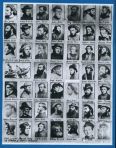
The lovely Polperro Press allowed us to use some of these iconic photos in an article in Yarn Forward 18, last year – Harding’s images thought to be the first ever of ganseys – taken by Lewis Harding in Polperro, Cornwall, around 1850. Mary Wright’s classic little book, Cornish Guernseys & Knitfrocks is back in print, thanks to them. Well worth buying for you gansey fans!

Yorkshire Inland Waterways Museum, Goole
The earliest printed pattern for a gansey is as late as the 1880s. A survey of the 19thC newspapers picks up nothing for ‘knit shirt’ or ‘knitted shirt’, but a few references for ‘knit frock’ concentrated around the 1850s onwards, and that word yields to ‘gansey’ by around the 1870s. Curiously, the word gansey even then often appears in inverted commas, as if they thought it was a vulgar word. The gansey is very firmly post Industrial Revolution – the crisp stitch definition etc only an option once most gansey worsted can be machine spun and, post 1860, chemically dyed, if necessary. It is a product of the mechanised age even when it is handmade, so sadly, no spinning ladies in the picturesque doorways of cottages with roses round them. It’s an occupational costume, maybe ground out as often by Dales contract knitters doing generic garments, as made by loved ones for loved ones. It cannot predate the 18thC and very likely does not predate say the 1790s. By the time Lewis Harding took the first photos of ganseys in Polperro, Cornwall in 1850 – it is clearly an evolved art. But that’s an evolution that may only have taken one or two generations.
So whilst it would be lovely to give the Leicester Lads their fantasy and say yes there were Tudor/17thC jumpers – hard truth is – sorry lads. There just weren’t.
To see images of earlier knitting, look at the V & A Collection, here.
Museum of London Collections here.
Shetland Museum (Gunnister and others) here.
Also, some old links but maybe you’ll find something here.
Posted in ganseys, History, Knitting, Re-enactment, spindle whorls | Tagged gansey, gansey knitting, ganseys, hull, knitting history, knitting sheath, knitting sheaths, polperro, spindle, spindle whorls, spinning, yorkshire knitting | 10 Comments »

